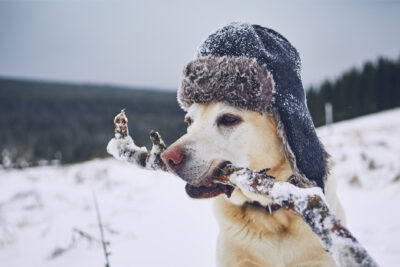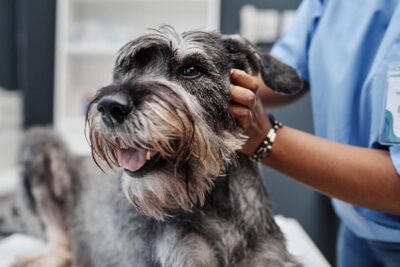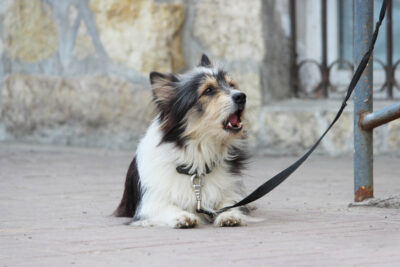9 Reasons Your Dog Is Peeing A Lot

All featured products are chosen at the discretion of the GreatPetCare editorial team and do not reflect a direct endorsement by the author or reviewer.
If you’ve ever wondered if your dog is peeing a lot, you’re not alone. After all, how many of us know how much pee is normal and how often dogs should pee?
Ever asked the question, “Why is my dog peeing so much?” Read on to learn what what’s normal, what’s not, and when it’s time to see the vet.
Dog Peeing: What’s Normal?
According to Dr. Sarah J. Wooten, a veterinarian based in Colorado, all dogs create the same normal amount of urine based on their body weight. This can vary depending on the dog’s hydration status, but in general, dogs produce 2 milliliters (ml) of urine per kilogram (kg) of body weight per hour. For a 20-pound dog, that works out to 18 ml of urine per hour or a little under half a liter of urine per day.
Frequency of urination can vary, but dogs usually go first thing in the morning, then every 5 to 6 hours throughout the day. Most adult dogs can hold their urine overnight. But it’s not uncommon for young puppies to have to go out to pee in the middle of the night while their bladders are still maturing.
Male and female dogs produce the same amount of urine based on body weight. But male dogs, especially those out for a walk, often pee smaller amounts more frequently. Male dogs that urine mark will pee small amounts many times until their bladder is completely empty. Determined boy dogs might keep lifting their leg and squeezing out one or two drops long after their bladder is empty. Some males forgo the marking and go all at once, especially first thing in the morning. Though some female dogs also urine mark, females more often void their bladder completely at the first opportunity.
Why Is My Puppy Peeing a Lot?
If you’re concerned your dog is peeing too much, consider both frequency and volume.
“Puppies have not trained their bladders to hold urine as long as adults,” Dr. Wooten says. “They will need to go more often – every hour in very young puppies and every 3 hours in puppies 8 to 12 weeks of age.”
As puppies grow, they can hold their pee longer until they are going every 5 to 6 hours during the day and holding their urine overnight.
What Is Pollakiuria in Dogs?
There are two things to consider if you’re worried about your dog’s peeing habits: frequency and volume.
The scientific term for frequent urination in dogs is pollakiuria. The word comes from the Greek pollakis, which means often, and uria (urine). Frequent urination in small amounts can be a sign of bladder issues, like urinary crystals or bladder stones. If your veterinarian determines that’s the case, they may recommend a prescription urinary diet (e.g., Royal Canin Urinary SO).
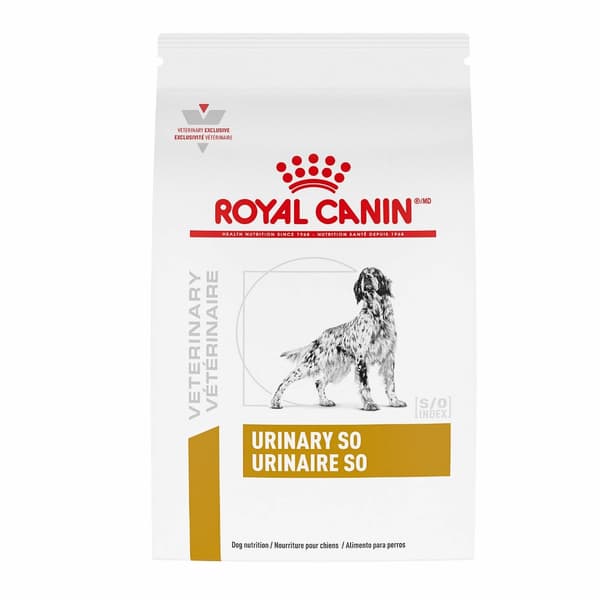
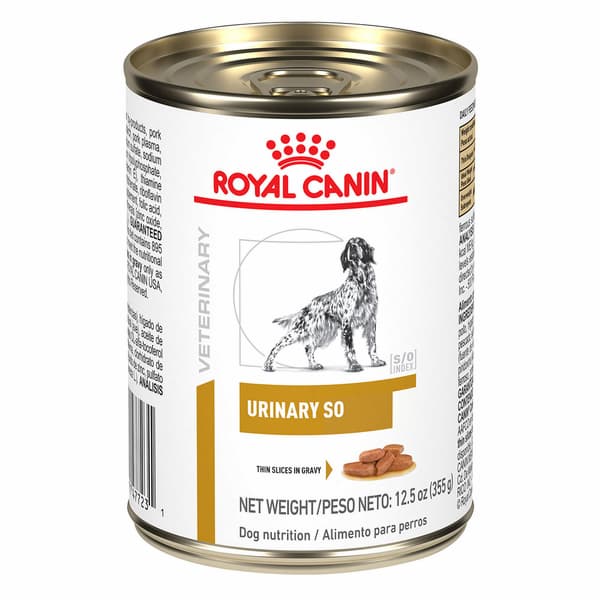
The scientific term for abnormally large amounts of urine is polyuria, from poly (many or much) and uria (urine).
Both frequent urination and excessive urination are common issues among dogs. Let’s take a closer look at the possible causes.
9 Common Reasons for a Dog Peeing a Lot
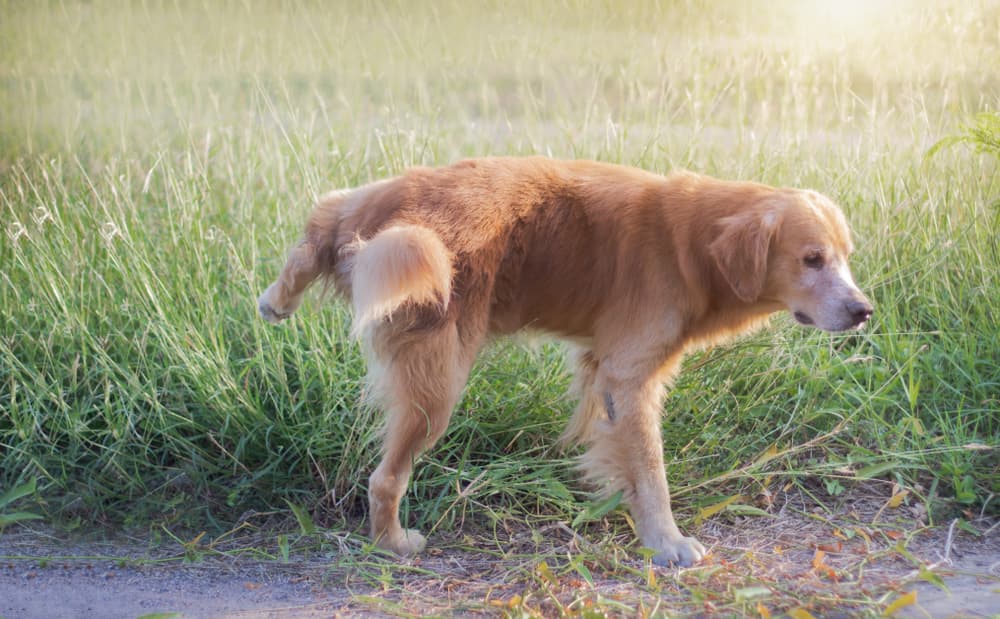
Some causes of frequent or excessive urination are normal and some are not. A dog that is peeing a lot may be suffering from a medical problem like an infection or disease. Or it can be caused by a behavioral issue, like territorial marking or stress.
Urine Marking
Male dogs (and some female dogs) pee small amounts in many places, usually on vertical surfaces like trees, walls, and fire hydrants. Urine marking serves many purposes, from claiming territory to sending messages to other dogs. Pheromones and other chemicals found in a dog’s urine can communicate a lot to other dogs. These include the dog’s sex, reproductive status, health status, and even size (the higher the urine, the bigger the dog).
Urine marking is a normal dog behavior, but it can become problematic if the dog is urine marking in the house. Neutering an intact male dog can help reduce urine marking behavior, especially if it’s happening indoors.
Submissive or Excitement-Induced Urination
Some dogs, especially young puppies, might pee when they meet new people or dogs. This can be due to fear, shyness, or excitement. The amount of pee is usually small, though some puppies might pee larger amounts. This type of frequent urination usually resolves itself as the puppy grows older.
Incontinence
Older dogs sometimes begin to lose control of their bladders, dribbling urine during the day and/or night. Dogs with incontinence can leak small amounts of urine or larger amounts. Incontinence can be caused by old age, be a side effect of spaying (called spay incontinence), or be caused by certain diseases or medications. Doggie diapers can contain the pee, and your veterinarian might be able to prescribe certain medications to help.
Side Effects from Medications
Certain medications can cause dogs to drink and urinate more than usual, or leak urine involuntarily. Talk to your vet for advice if you suspect your dog’s peeing problems are being caused by a new medication.
Urinary Tract Infections/Bladder Issues
Bladder issues, including urinary tract infections, bladder inflammation and bladder stones, can increase the urge to urinate. Sometimes dogs strain to go, but don’t pass any urine. You might also see blood in the urine. According to Dr. Wooten, these can be very painful. So it’s important to seek veterinary care immediately if you suspect a UTI or other bladder issue.
Cushing’s Disease
Cushing’s disease (AKA Cushing’s syndrome) causes the adrenal glands to produce too much of certain hormones. Besides excessive drinking and urination, dogs with Cushing’s disease may also develop an increased appetite, pot-bellied appearance, poor coat and skin, and bladder infections. Without treatment, Cushing’s disease can be life-threatening.
Diabetes
Dogs with diabetes (including diabetes insipidus and diabetes mellitus) might drink more water than normal. As a result, they may pee large volumes of very dilute urine (which can be clear like water). Diabetes can also cause increased appetite and weight loss. This disease is life-threatening if left untreated. Dogs with diabetes need special treatment, including insulin.
Kidney Disease
Dogs with kidney disease can suffer from frequent urination and/or urinating large volumes. Kidney disease is a serious condition that requires urgent veterinary attention. Dogs diagnosed with kidney disease usually need treatment, a special diet and supportive care for the rest of their lives.
Liver Disease
Liver disease can interfere with your dog’s ability to process toxins and regulate fluids, which may lead to increased thirst and more frequent urination. As the liver becomes compromised, the kidneys often work harder to compensate, producing more urine in the process. If you notice excessive urination along with symptoms like vomiting, weight loss, jaundice, or lethargy, seek veterinary care as soon as you can.
Frequent Urination in Dogs: When to Worry
If your dog is peeing more than usual, it could be normal dog behavior or it could be a symptom of something more serious.
Some signs that a medical concern might be causing your dog to pee a lot include:
- Excessive thirst (emptying their water bowls)
- Increased or decreased appetite
- Bloody urine
- Straining to pee but nothing comes out
- Excessively licking their private parts
- Vomiting or diarrhea
- Sudden/frequent accidents inside house
What to Do About Your Dog Peeing a Lot

Even if you suspect that your dog’s frequent urination is behavioral, the first step should always be a veterinary exam to rule out any medical causes. A vet checkup is especially important if your dog is drinking a lot of water and peeing a lot. “Problems that cause a dog to drink more than usual can get serious fairly quickly,” Dr. Wooten says.
The vet will perform a thorough exam, and may want to run tests, including analyzing your dog’s urine. “You can bring in a sample, but often your vet will want to collect a sterile sample at the office,” Dr. Wooten says. “If they suspect an underlying medical condition like diabetes or Cushing’s disease, they will also want to run blood tests.”
If your vet suspects bladder stones or bladder abnormalities, they might also want to take X-rays or do an abdominal ultrasound of your dog’s bladder. Depending on what they find, medicine or surgery may be necessary. Your vet might also recommend a prescription diet that’s specially formulated to help dissolve existing stones and reduce the risk of new ones developing, such as Royal Canin Urinary SO for dogs. This veterinary-exclusive diet helps dissolve struvite stones and prevent calcium oxalate and struvite stones from forming.


In cases of chronic kidney disease, a specialized diet is also a key part of the treatment plan. Veterinarians often prescribe a reduced sodium formula with limited but high-quality protein.
If your vet diagnoses a UTI they may prescribe an antibiotic like amoxicillin or enrofloxacin (available under the brand name Baytril), which are both used to treat bacterial infections. To promote overall urinary health and prevent future UTIs, you can also ask about non-prescription nutritional supplements, such as CranMate.
Canine urinary incontinence can also be caused by weakened muscles in the urethra. If that’s the case, your vet may prescribe PROIN (phenylpropanolamine hydrochloride) or, if your pet is a spayed female dog, incurin (estriol) tablets.
If your vet gives your dog a clean bill of health, the frequent urination could be behavioral. To get help for urine marking, or excitement-induced or submission urination, Dr. Wooten says it’s best to talk to a trainer or animal behaviorist. Your vet can give you a referral to someone in your area.
One thing you should never do if your dog is peeing a lot is withhold water. It might be tempting, but this is dangerous. Not letting your dog drink can dehydrate them and make them sick. And don’t scold your dog for peeing a lot. If it’s a medical issue, it’s likely out of your dog’s control.
